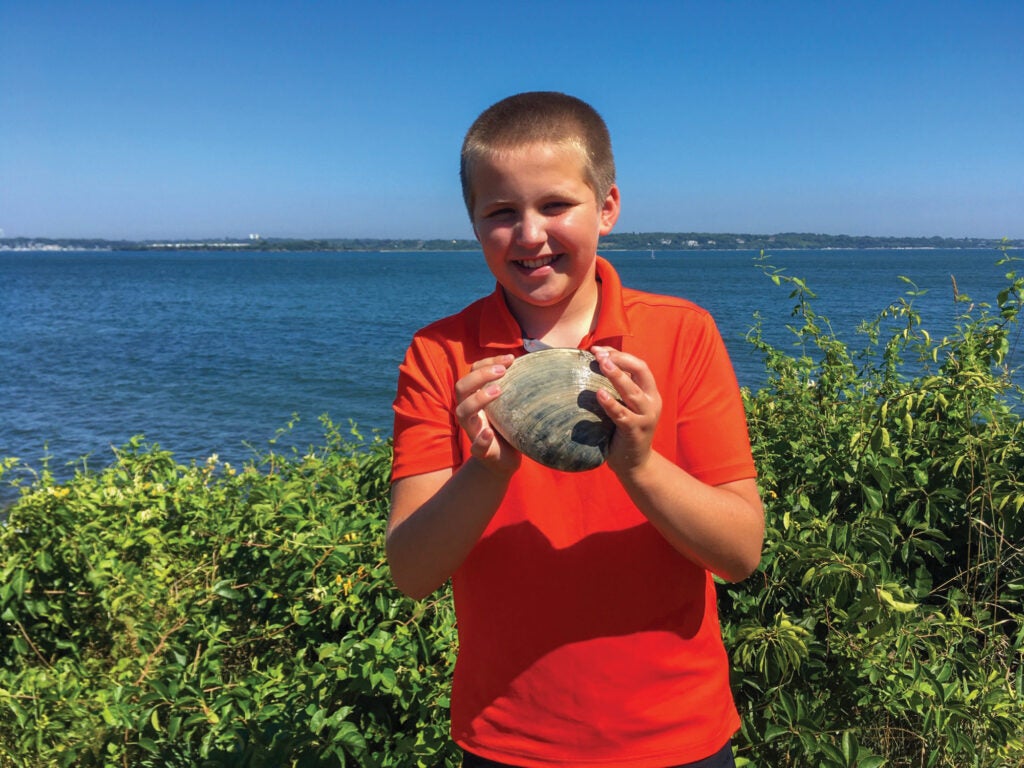A family outing turned into a lucky—and record-breaking—day for 11-year-old Cooper Monaco.

Eleven-year-old Cooper Monaco was clamming with his grandfather last summer in Weekapaug, Rhode Island, when he discovered what may be the largest clam ever harvested from Rhode Island waters. Monaco and his family donated it to URI’s Marine Science Research Facility at the Narragansett Bay Campus.
The quahog–measuring 5.75 inches across and weighing 2 pounds, 7.75 ounces –is one of the largest specimens on record, though the Rhode Island Department of Environmental Management does not keep quahog records. A typical quahog grows to about 4 inches across.
“I was down on my hands and knees in the water looking for clams, and I touched this huge rock thing,” he said. “And then I felt the edge of it and I thought, ‘Holy moly, this is a clam!’ So I pulled it out. It was amazing.”
Cooper’s mother, Sherrie Monaco, says the family searched online and learned that the oldest ocean quahog, nicknamed Ming, was dredged from the waters off Iceland in 2006, and scientists calculated that it was 507 years old. The quahog found by Cooper is comparable in size to Ming, though its age has not yet been determined.
“I’ve been reading the Guinness Book of World Records, so I told my mom not to cook it just in case it’s a record-breaker,” said Cooper.
Ed Baker, manager of the URI Marine Science Research Facility, said the quahog would be displayed at the facility, along with blue lobsters and other Narragansett Bay sea creatures.
“We try to inspire young kids to get interested in marine science by showcasing some of the marine life found in the bay,” he said. “We also highlight some of the interesting research conducted here and explain why it’s important.”
“I felt the edge of it and I thought, ‘Holy moly, this is a clam!’ So I pulled it out. It was amazing.”
The facility hosts an array of research and features dozens of tanks holding a variety of marine life, most of which is used for research on the changing marine environment. This year’s research topics include the effect of warming water on the development of juvenile lobsters, how microplastics affect oysters, disease resistance in local oysters, and understanding coral biology to improve its survival around the world. •
—Todd McLeish
Photo: Todd McLeish
